Brain Orientation, THE PERIPHERAL NERVOUS SYSTEM
1/29
Earn XP
Description and Tags
Name | Mastery | Learn | Test | Matching | Spaced |
|---|
No study sessions yet.
30 Terms
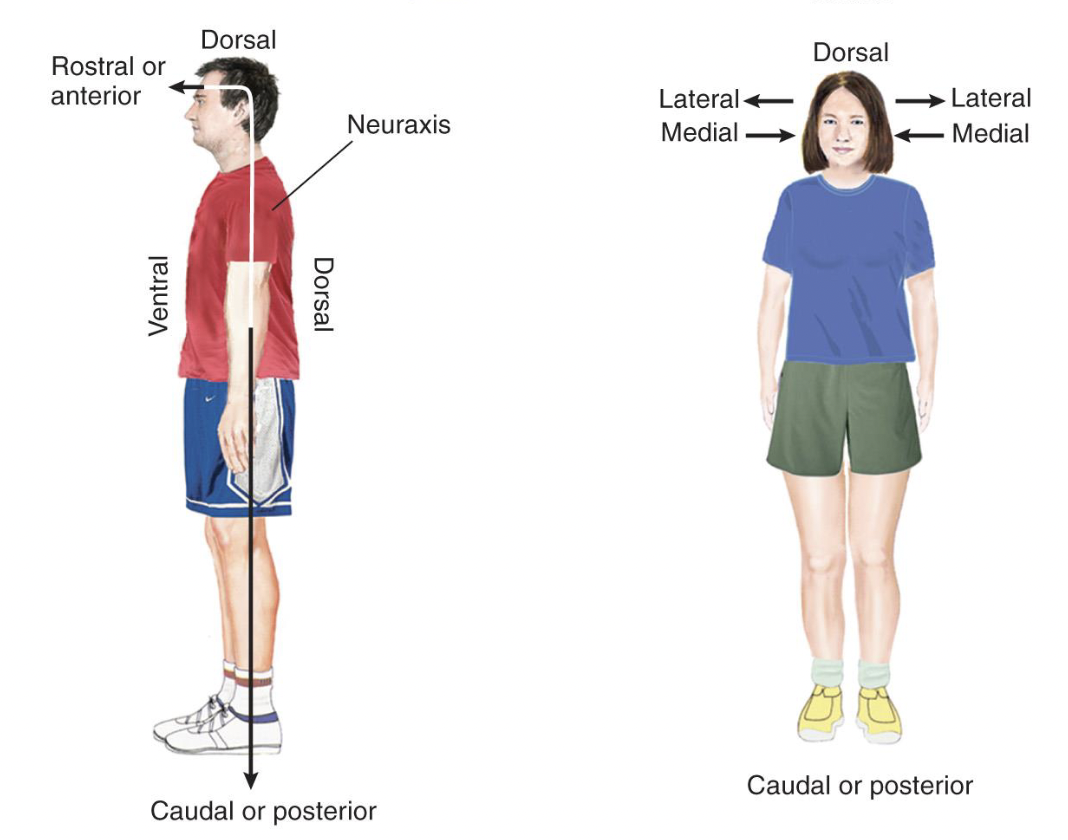
Dorsal
spinal cord—> toward the back of body/top of head
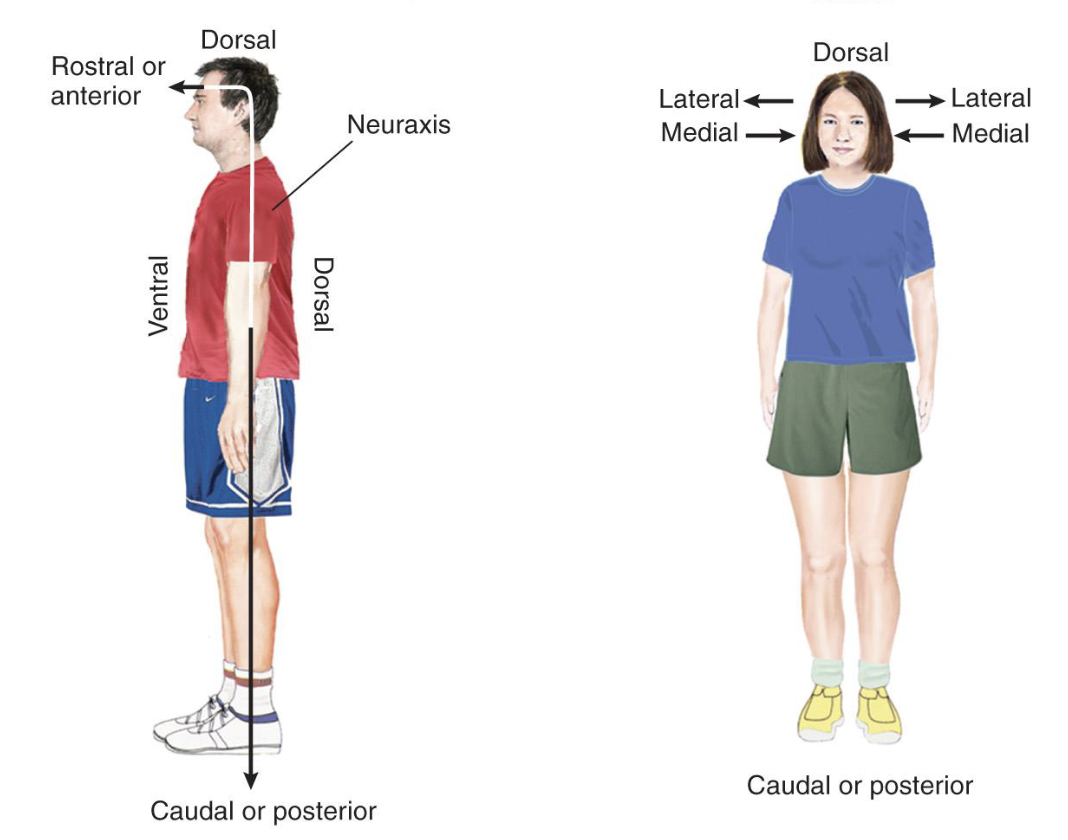
Ventral
spinal cord, toward the belly
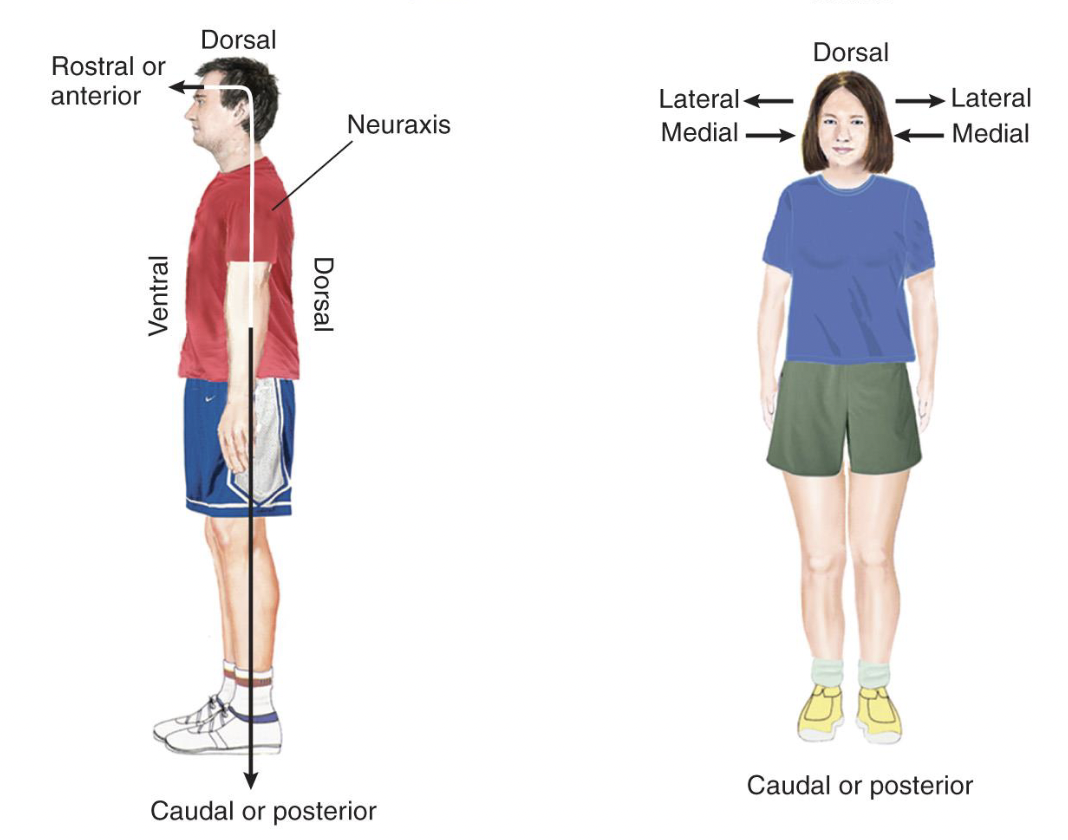
Anterior
Toward the front of face (like the nose or forehead).
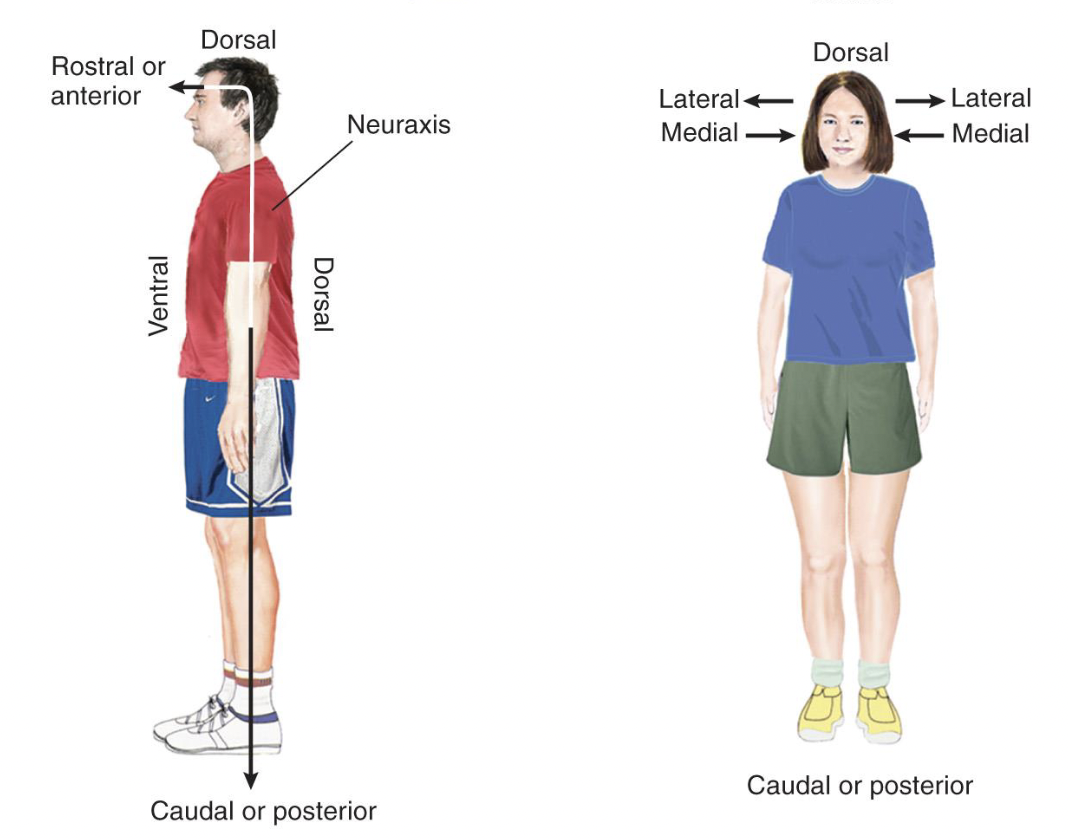
Posterior
spinal cord—> Toward the back (lower spinal cord). down
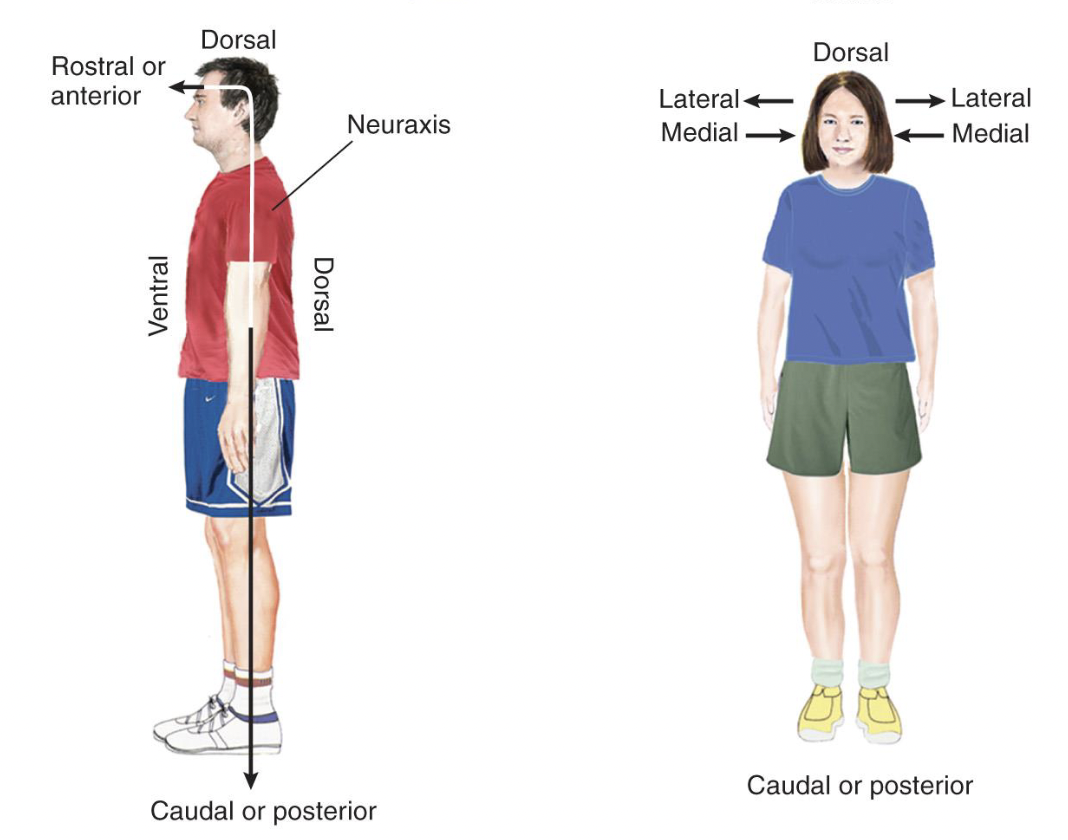
Medial ←-
Toward the midline (nose/ ears)
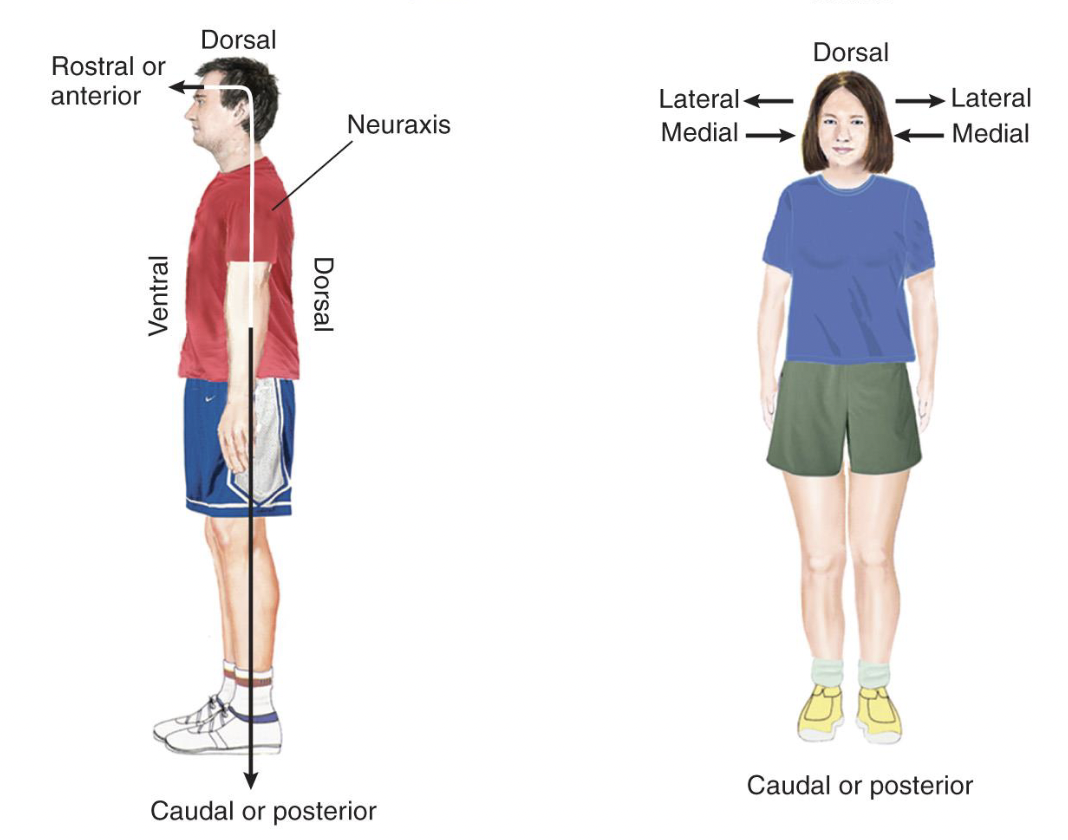
Lateral —>
Away from midline (forehead area)
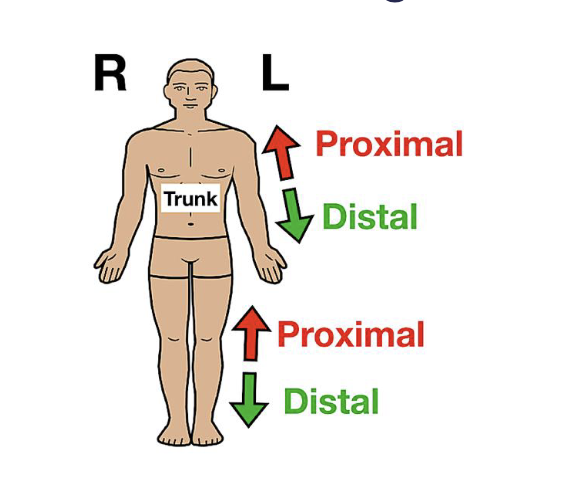
Proximal
Near origin
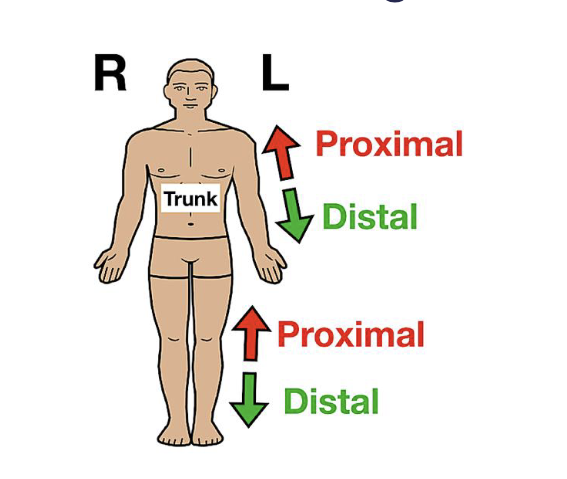
Distal
Far from origin
Origin
The CNS
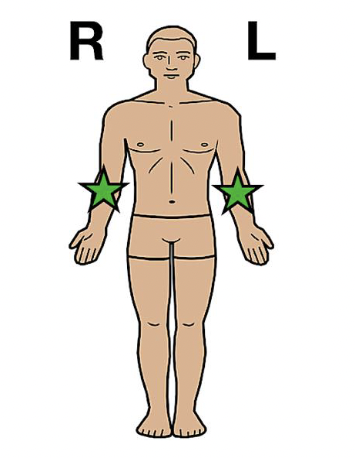
Ipsilateral
Same side of body
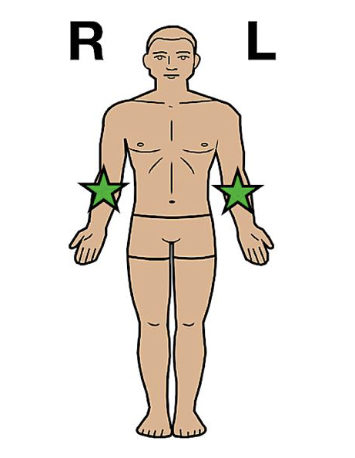
Contralateral
Opposite sides of body
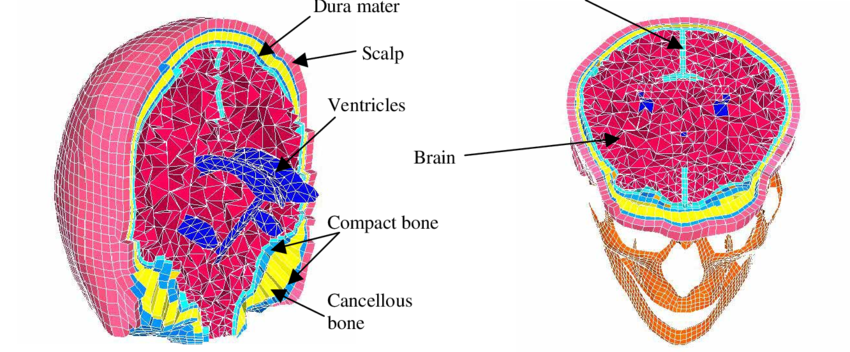
Axial Slice
slice the top of brain
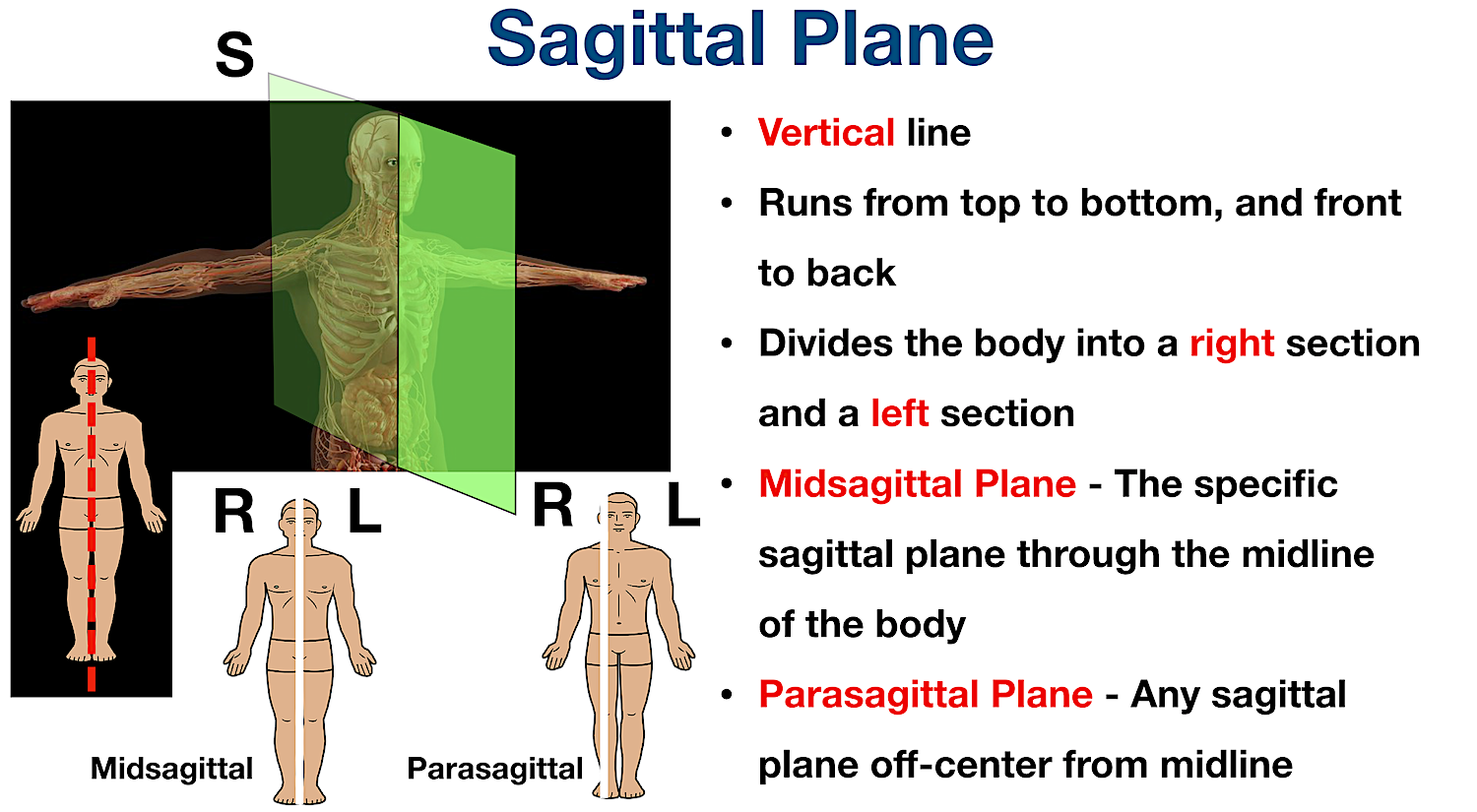
Sagittal Slice
slice brain in the middle, fingers facing sky
Coronal Slice
“slice your face off”
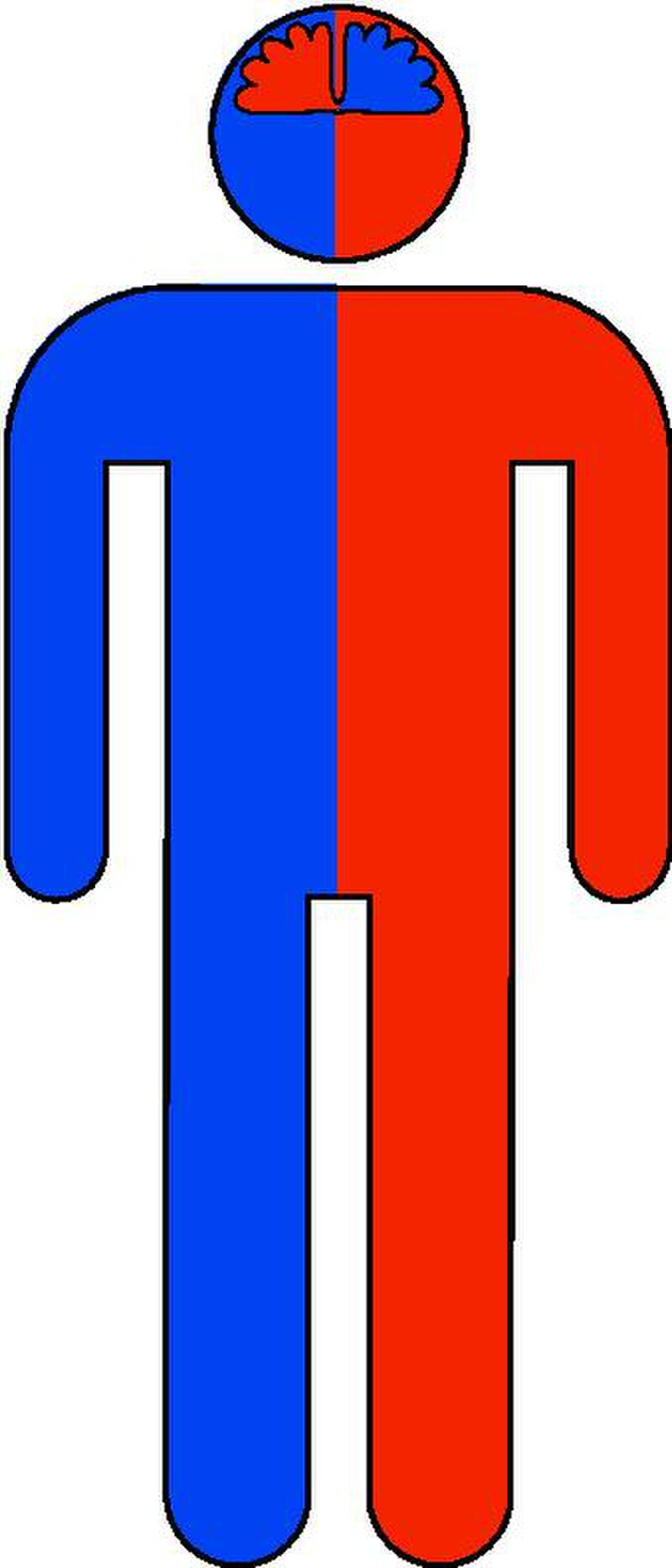
Contralateral Function
2 hemispheres (Left and Right) are connected by bundles of axons called the Corpus callosum
Contralateral Function: Split Brain Patient (Joe)
his corpus callosum split in half and no longer has contralateral functioning
Left Visual Field → Can't name it, but can draw it.
Right Visual Field → Can name and draw it.
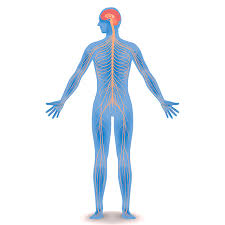
THE NERVOUS SYSTEM
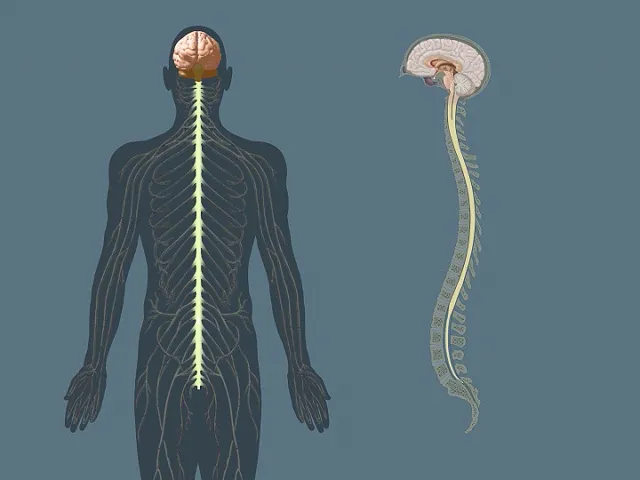
Peripheral Nervous System (PNS)
🔹 Connects the brain & spinal cord to the body
🔹 Communicates via cranial & spinal nerves
Spinal Nerves
31 pairs of spinal nerves (from spinal cord)
12 pairs of cranial nerves (from brain)
🔹 Emerge from the vertebral column
🔹 Carry signals to muscles from sensory receptors
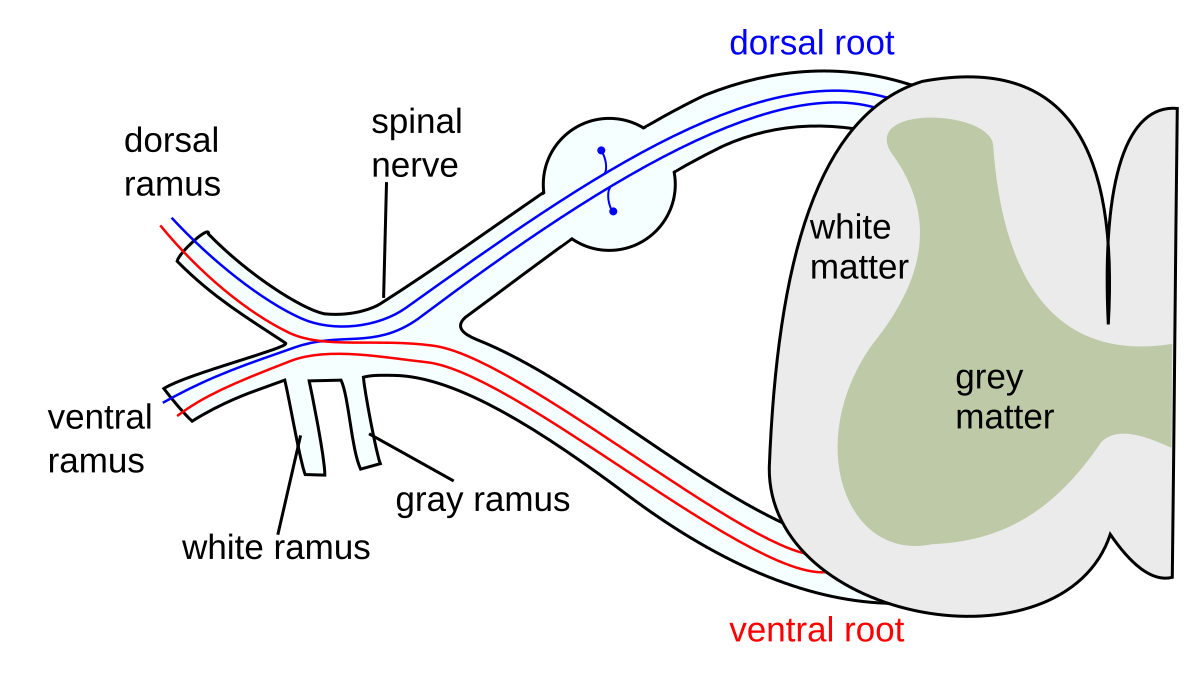
Dorsal Root
Allows sensory neurons to enter the spinal cord
- Contains afferent axons (admits signals to the cell)
Dorsal Root GANGLION
HOUSES the cell bodies of sensory neurons
Ventral Root
Contains motor neurons
spinal cord TO muscles
No ganglion (cell bodies are in the spinal cord)
12 Cranial Nerves
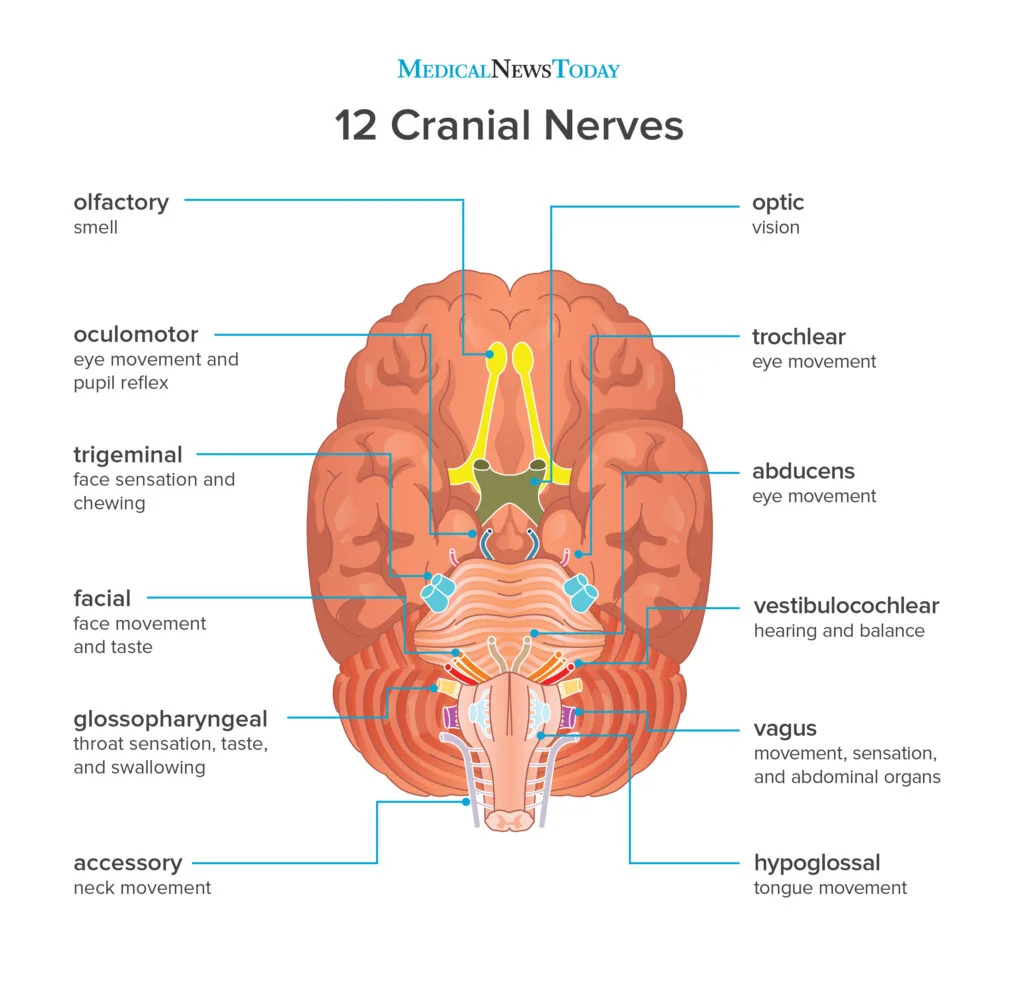
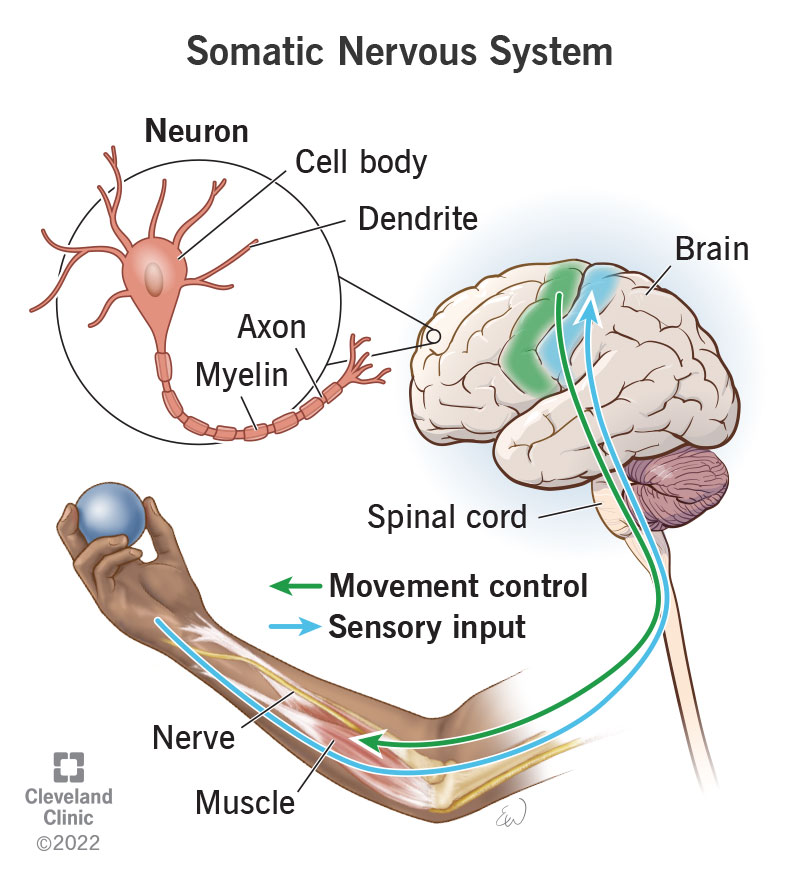
Somatic Nervous System (CNS)
🔹 Controls skeletal muscle movement
🔹 Sends sensory info to CNS (skin & sense organs)
🔹 Includes cranial & spinal nerves
AUTOMATIC NERVOUS SYSTEM (part of PNS)
Autonomic Nervous System (PNS)
Part of the PNS that controls involuntary (vegetative) functions
🔹 Regulates smooth muscle
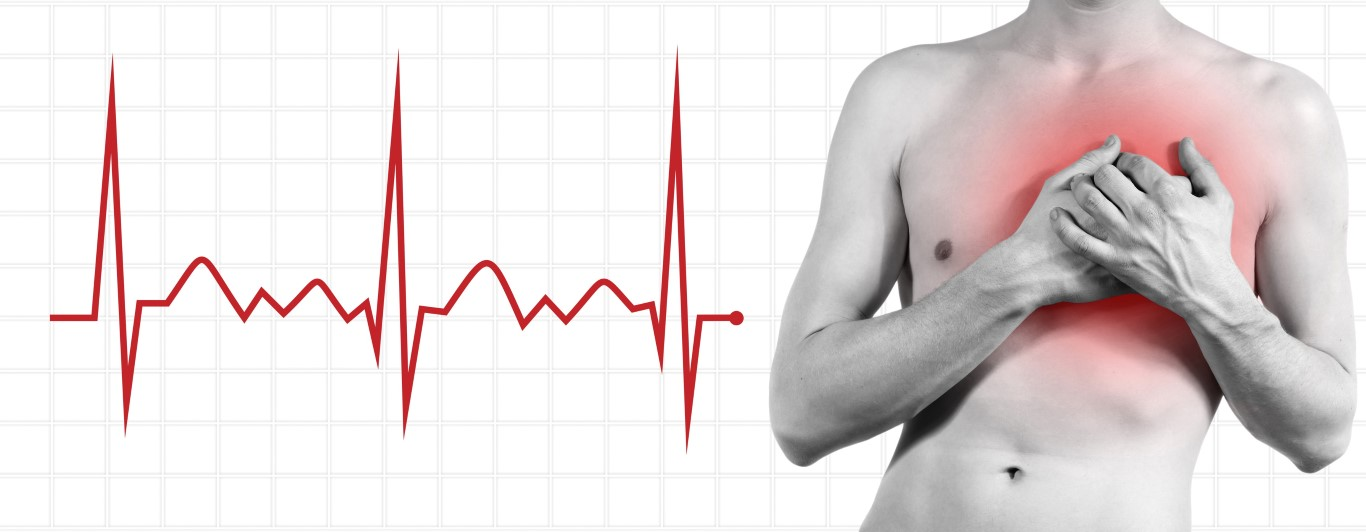
Sympathetic Nervous System
“Fight or Flight" response
Increases heart rate, blood pressure, & epinephrine release
Prepares body for energy expenditure & action
Sympathetic Nervous System (NEURONS)
Preganglionic Neurons → Short, synapse in ganglia near spinal cord
Postganglionic Neurons → Long, extend to target organs

Parasympathetic Nervous System
“Rest & Digest" response
- Conserves & restores energy
- Increases salivation, digestion, & blood flow to GI tract
Parasympathetic Nervous System (NEURONS)
Preganglionic Neurons → Long, from cranial nerve region
Postganglionic Neurons → Short, near or in target organs